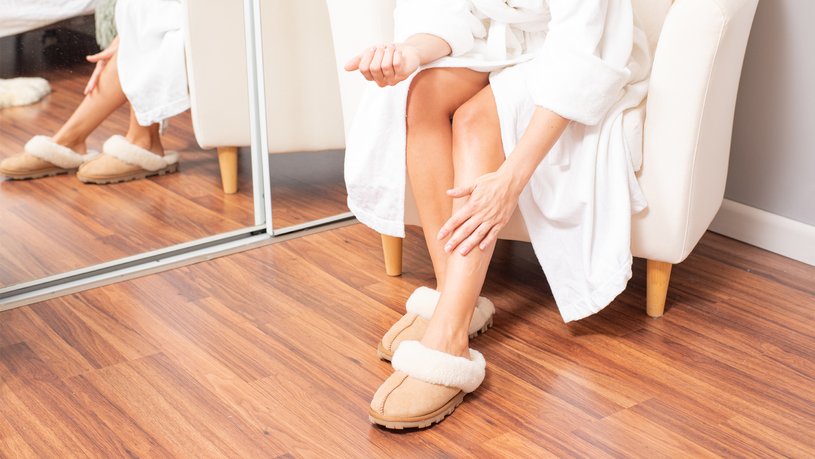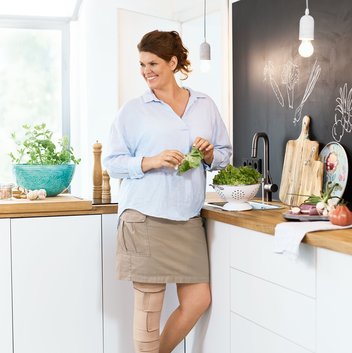Lymphoedema
Five ways to take care of your skin

If you’ve been diagnosed with Lymphoedema or Chronic Venous Insufficiency, it’s important to take extra good care of your skin. The swollen area can easily become scaly and cracked, leaving skin feeling dry and tight. You’re also at a greater risk of developing a bacterial infection, such as cellulitis, or a fungal infection.
Following a few simple skincare tips can help you manage your condition and keep your skin healthy, moisturised and infection-free.
1. Keep skin clean and dry
Get into a good routine of cleansing the affected area every day. It’s best to use a soap substitute, such as an oil-based cleanser, to prevent irritation. Always make sure your skin is thoroughly dried, especially in folds of skin or between your toes, where fungal infections are more likely to develop.
2. Moisturize regularly
Apply moisturizer at least once a day and after every wash. Lighter lotions are fine if your skin is in good condition, whereas thicker, greasier ointments or creams are more suitable for dry, flaky skin. Whatever you choose, moisturising will help keep your skin hydrated and stop it from drying out. Even when your swelling is controlled, you should continue to use lotion daily.
3. Check the labels
Always look on the label on the back of the bottle to check the contents of anything you put on your skin. Avoid products that contain alcohol, which can dry the skin, and fragrance, which could irritate it. Other ingredients to avoid for sensitive skin include parabens, liquid paraffin and SLS (Sodium Lauryl Sulphate).
4. Protect your skin
There are lots of things you can do to keep your skin free from injury, which could lead to infection. Wear gloves when your hands are at risk of injury to protect your hands and arms, and always wear footwear if your legs or feet are swollen. Use a sunscreen with a high SPF and sit in the shade, where possible, to prevent sunburn. Also, insect repellents will protect your skin and help to keep bites at bay.
5. Prevent infection
Simply being observant and regularly checking your skin could prevent an infection. Look for signs of redness, scratches or cuts and treat them promptly by washing the affected area and applying an antiseptic. Watch for any changes in the swollen area, too. If it becomes painful and warm to the touch, or you notice a rash, speak to your care provider straight away. This could be a sign of cellulitis, a potentially serious bacterial infection. So, it’s important to get it checked and treated early.


